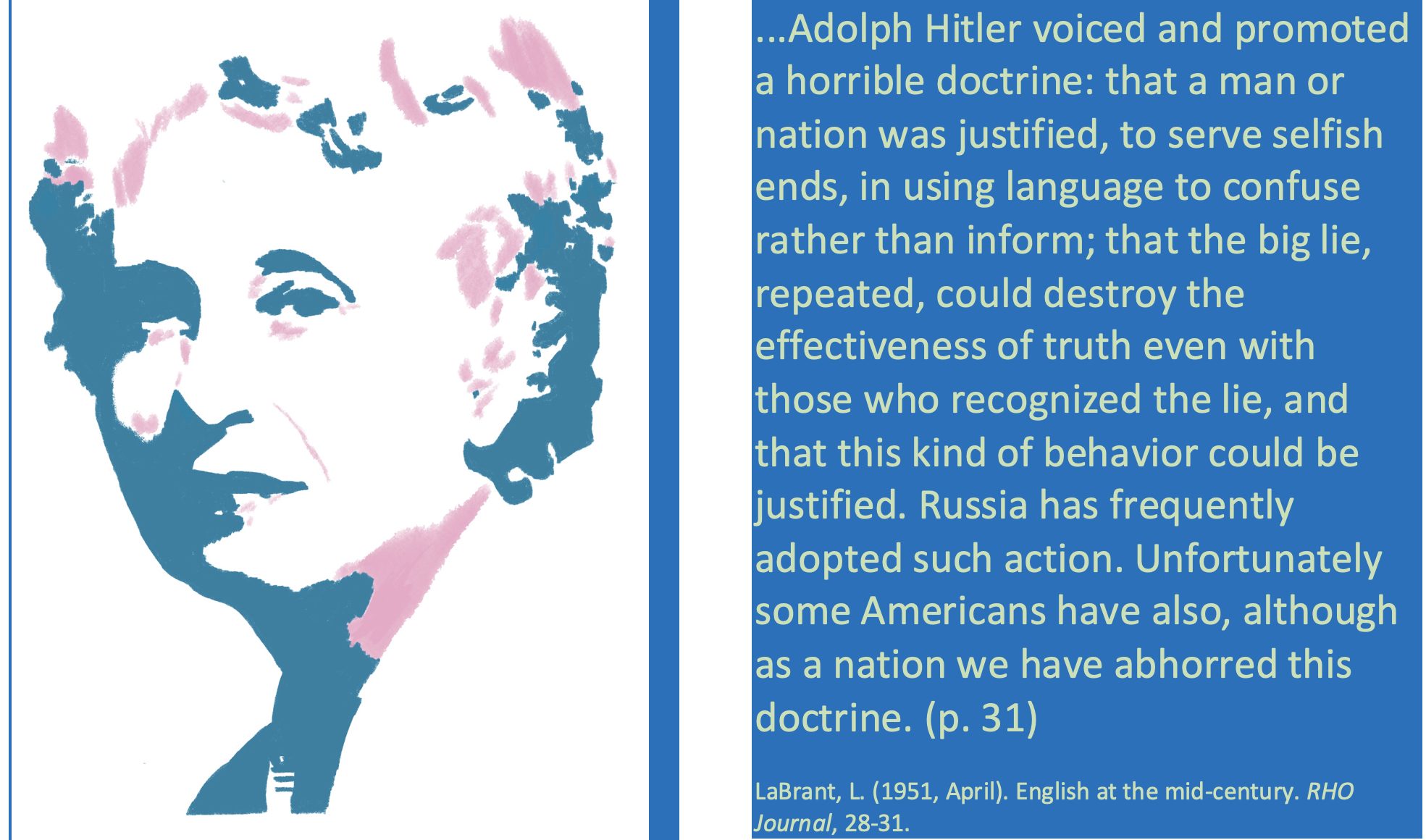LaBrant, L. (1943, December). To keep the peace. Education, 64(4), 225-230.
LaBrant explores the roles of schools in the post-war world and its place in seeking peace. She emphasizes the role of teachers, critical thinking, and collaboration among all people for that goal.
Quoting LaBrant:
Whether we are willing to admit the role or not, schools cannot escape responsibility for some share in determining whether the peace which comes will last….Our peculiar advantage and resulting responsibility is that we are skilled in the arts of reading, of independent study, and of writing….Human society does not stay fixed. (p. 225)
First, I believe that every teacher should—immediately—begin the study of the world situation with the determination that he will know as much as is humanly possible for him to know, and that he will use that knowledge in the most effective way. (p. 227)
The second effort I would advocate is that we attempt to develop the kind of students who can themselves make a world of peace even though we do not give them the pattern. (p. 228)
What I started to say was that we must not depend upon presenting a body of facts, useful as facts are, but that we must in our classrooms constantly remember that it is thinking about facts which is the important thing, and that this is as true in science and English and mathematics as it is in history or economics or the arts….Thinking is not sufficient. We must also have people who are accustomed to work with others (not against them), and who know that regardless of color, religion, clothing, occupation, or skills, people can work together….Teachers who are themselves striving to find answers will lead children toward those answers. (p. 229)
First page:


One thought on “To Keep the Peace (1943)”